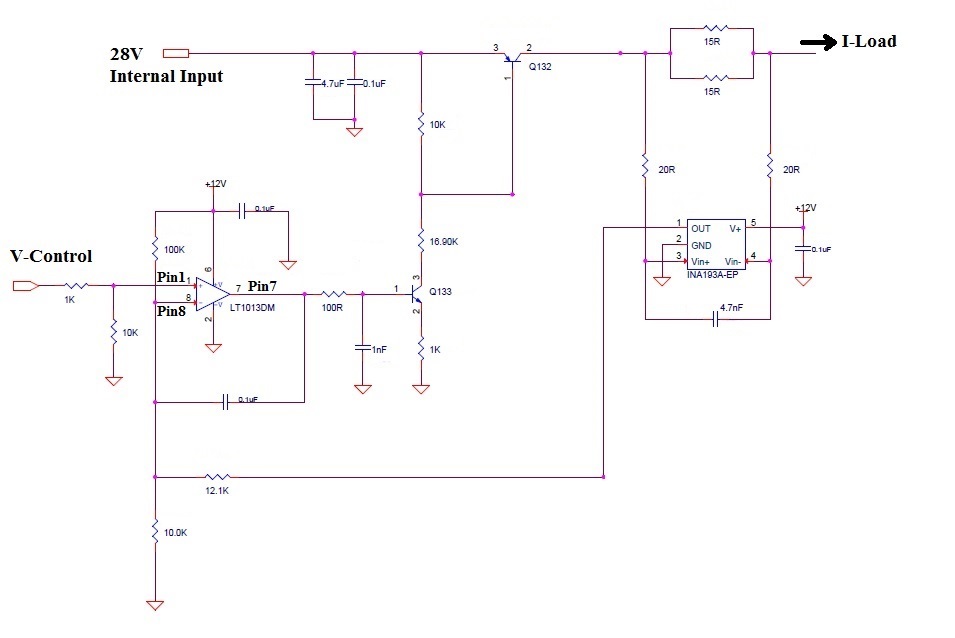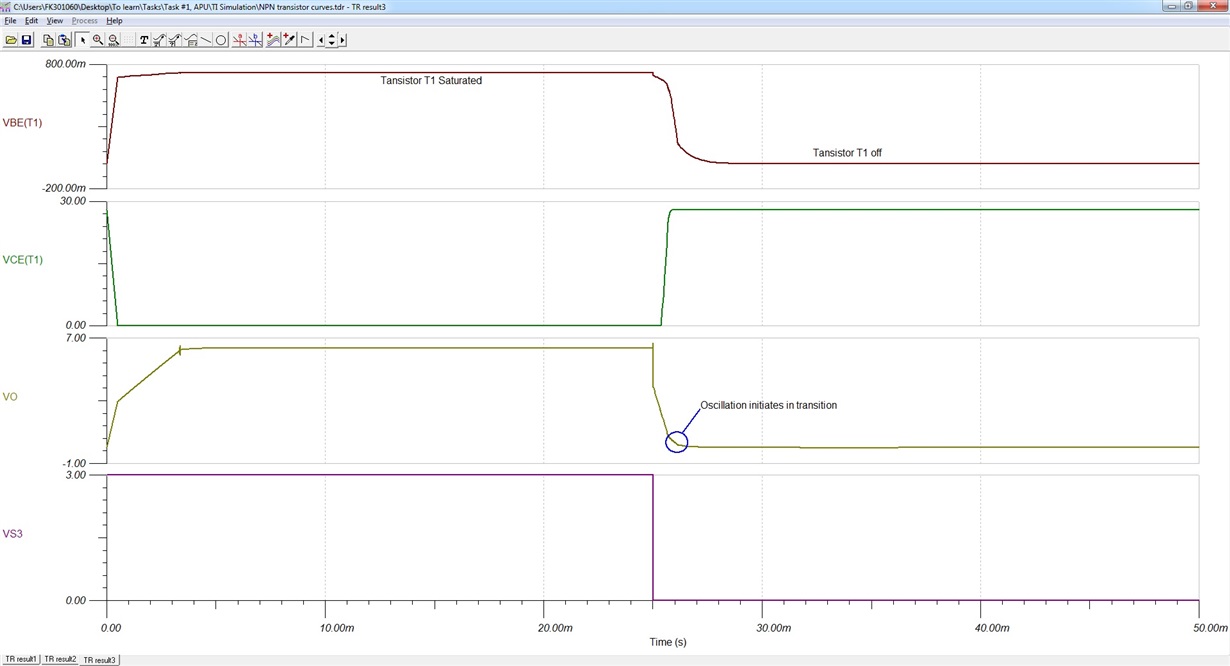I have the attached circuit as a Voltage Controlled (V_Control) Current Source (I-Load).
This circuit has an stability issue. When V_Control drops from 3.3 V to 0 V the circuit works fine at room temperature. But when the temperature is reduced to -45 degrees, it starts to oscillate.
I cant figure out why? I have kept asking this on TI forum and these are the possible reasons:
-
Slamming on the rail of LT1013 causes the pole in its output stage move to left reduce phase margin
- OPAMP has multiple loop feedbacks and the delay on Q133, Q132, INA193A increases during transition
Please see the attached waveforms.
At room temperature:
At -45 degree C:
We have been able to resolve this issue by removing integrator capacitor (0.1 uF) between pin 7 and 8 of the OPAMP. Here is the measurement with no cap:
Time domain simulations show that Q133 is saturated when V_Control is 3 V and it is off when V_Control is 0 V. So I have difficulty simulating the overall loop gain of the circuit as the oscillation happens during transition when Q133 is coming out of the active mode and turning off (VBE pumping current out). Please see bellow is the NPN and PNP behaviours during the V_Control signal transition from 3V to 0V. (in this simulation OPA237 model is used)
Tina Simulation File:
I am trying to justify either with calculation or simulation.
Please let me know if you have ideas that can help specially with the simulation.
Thanks




